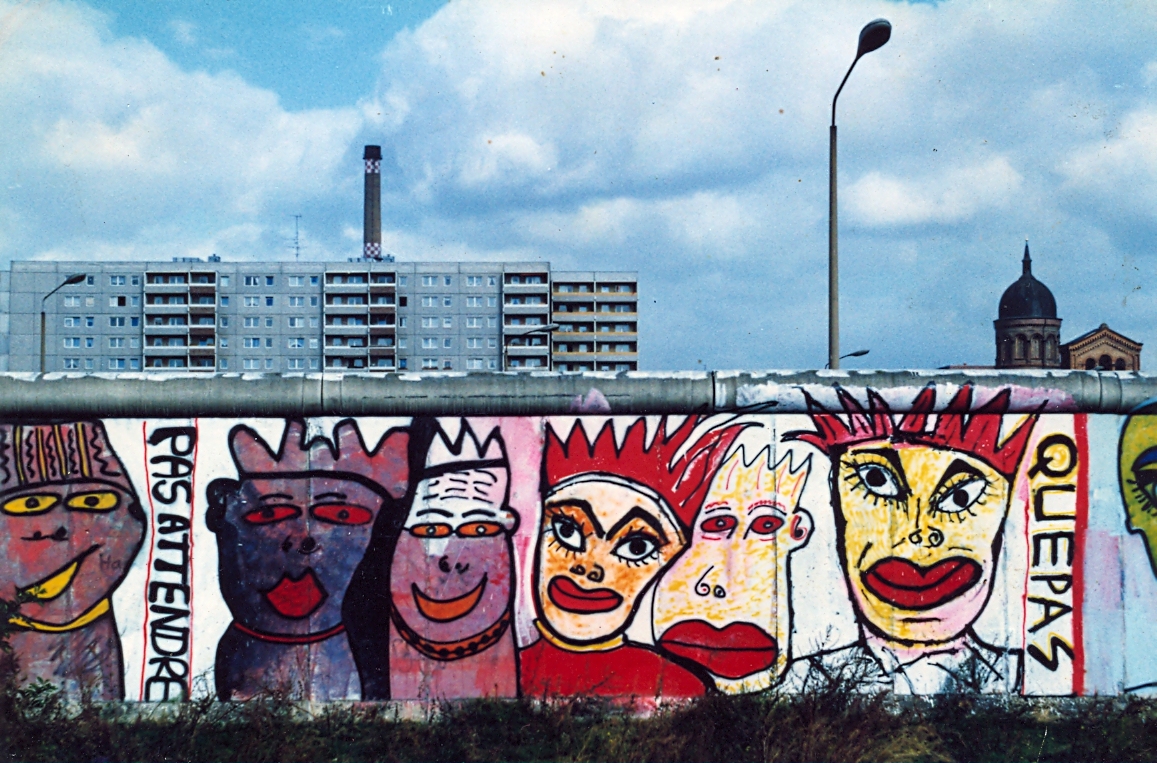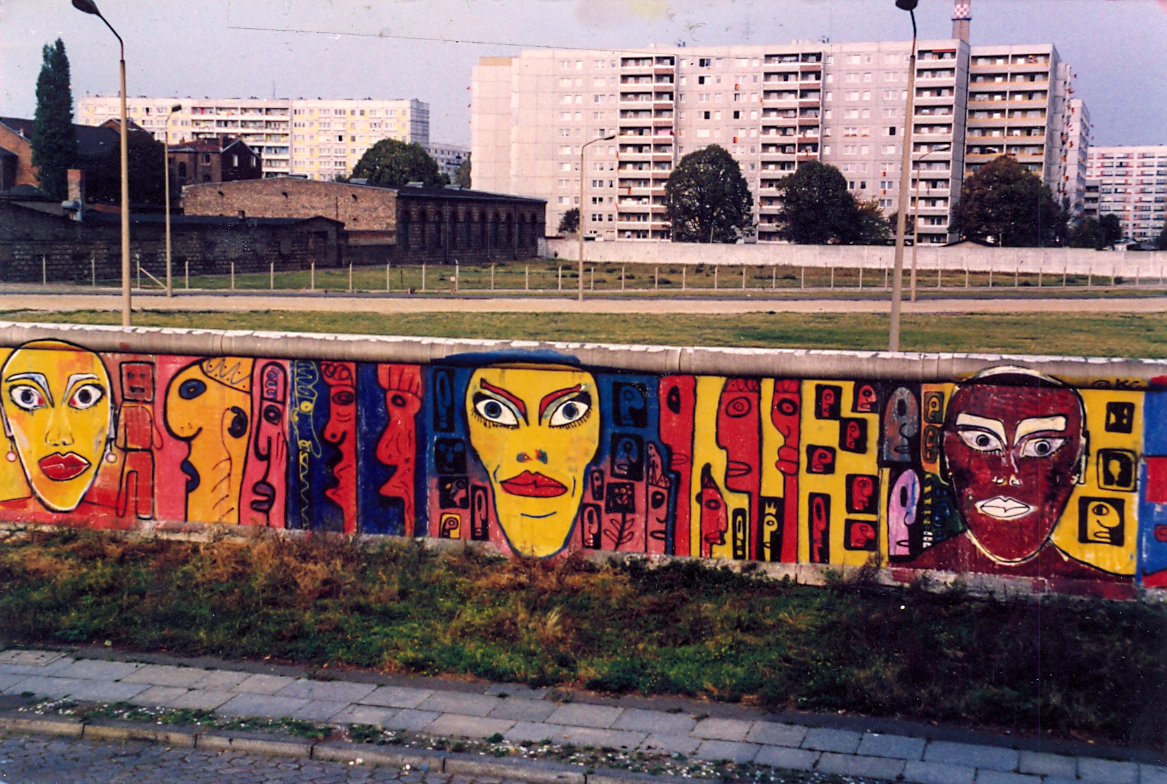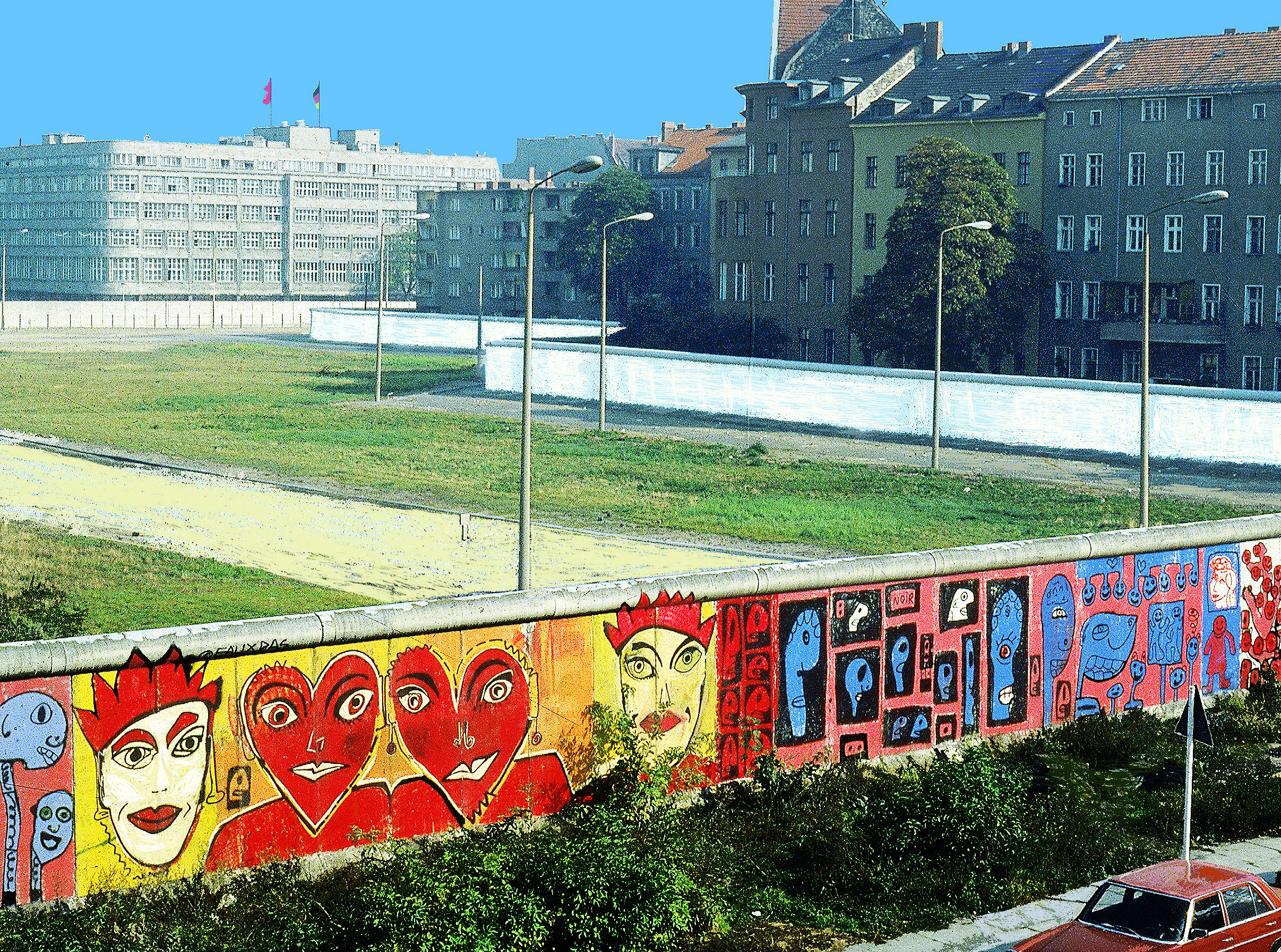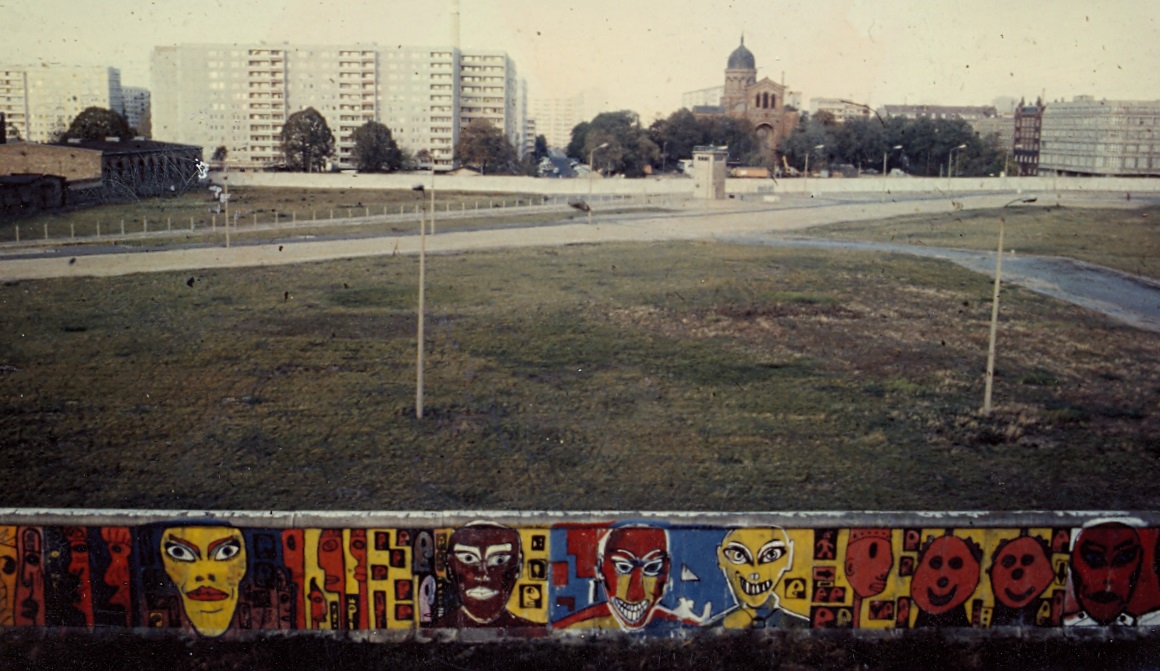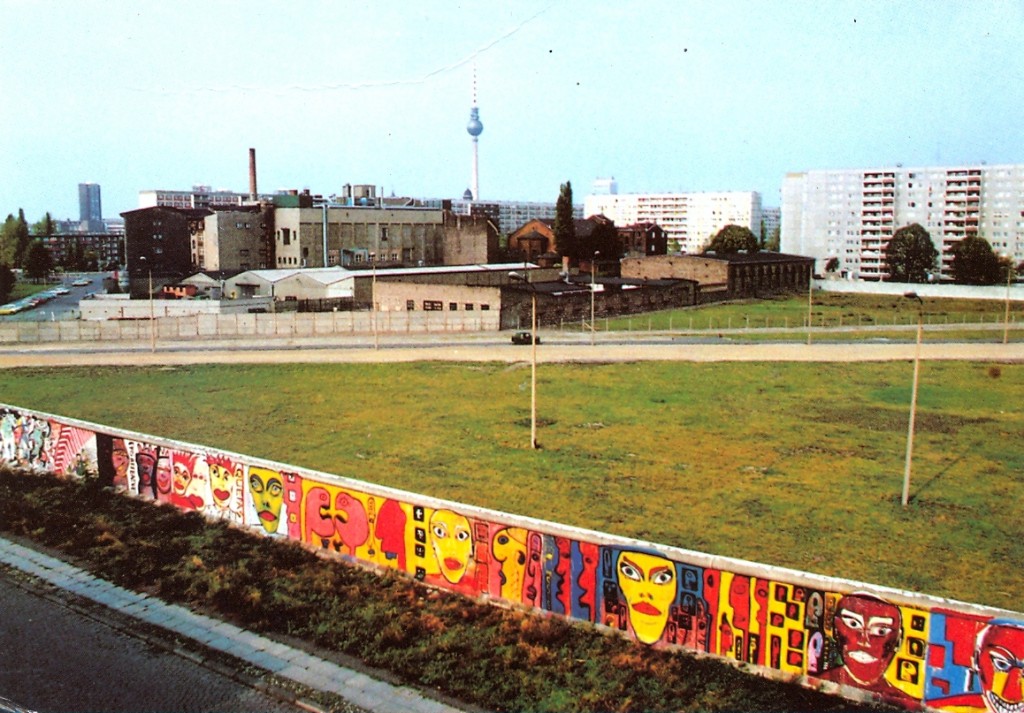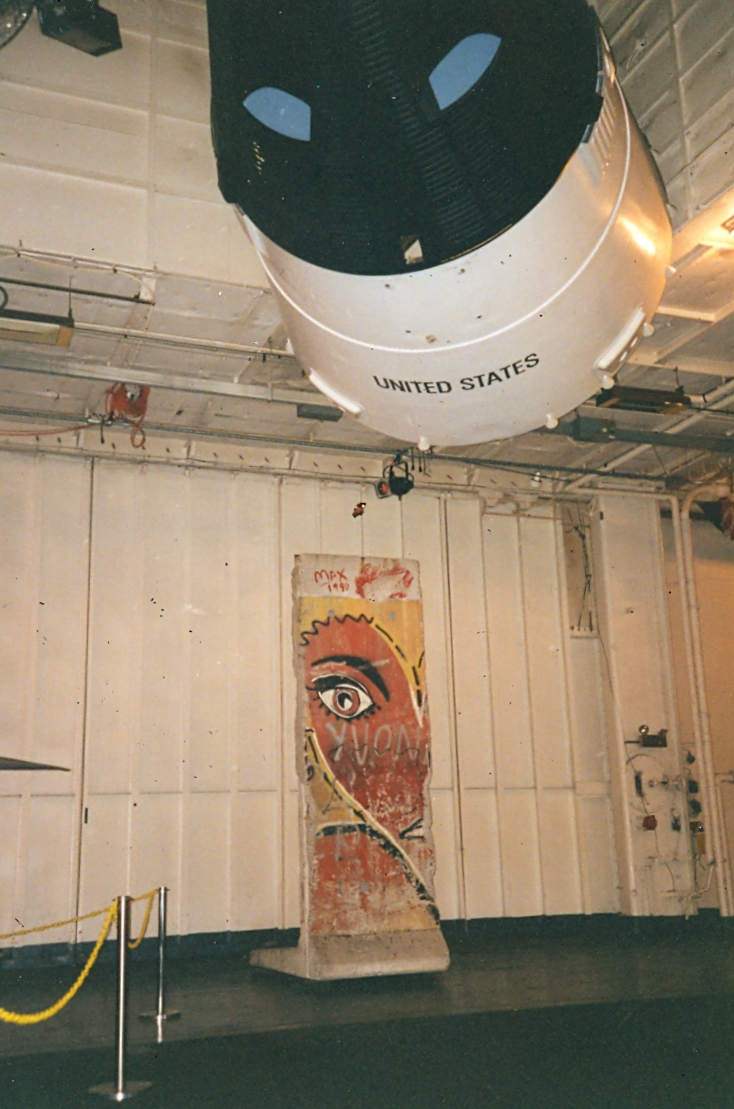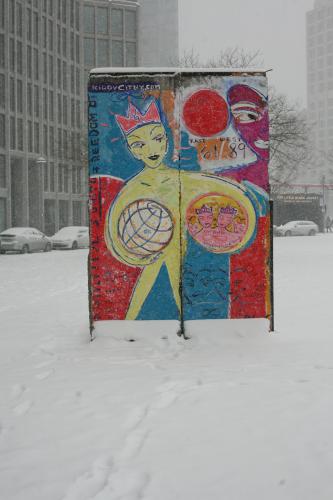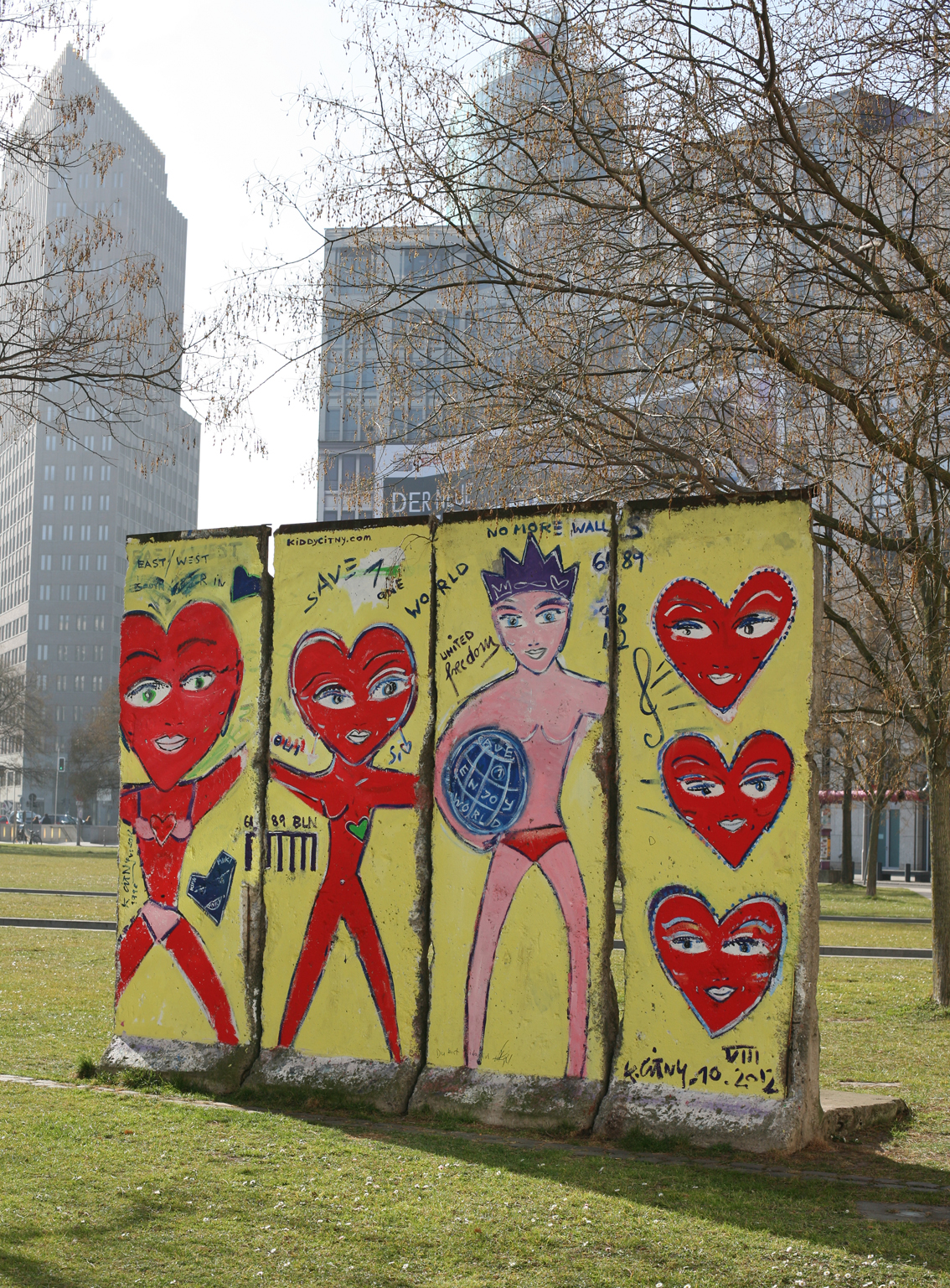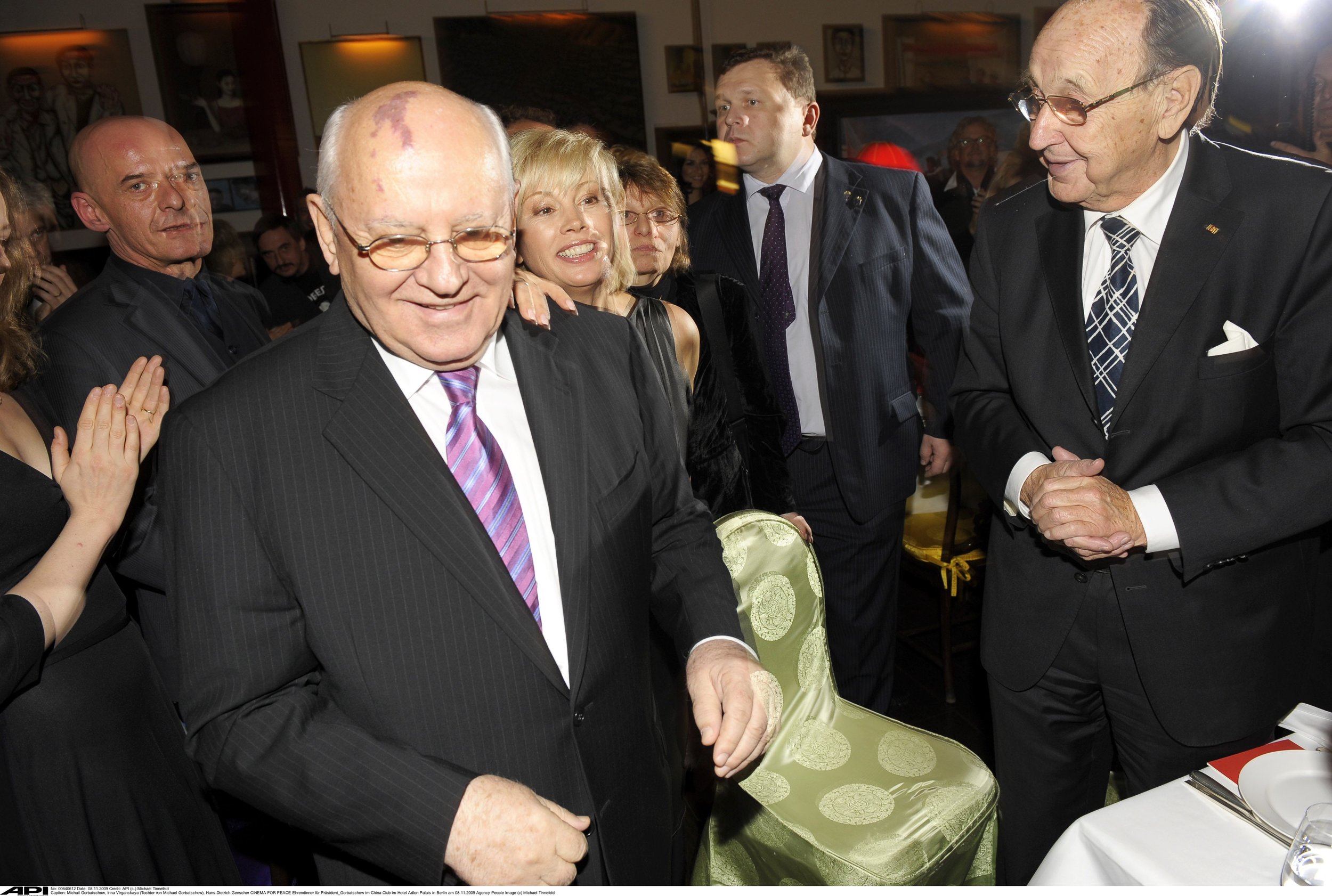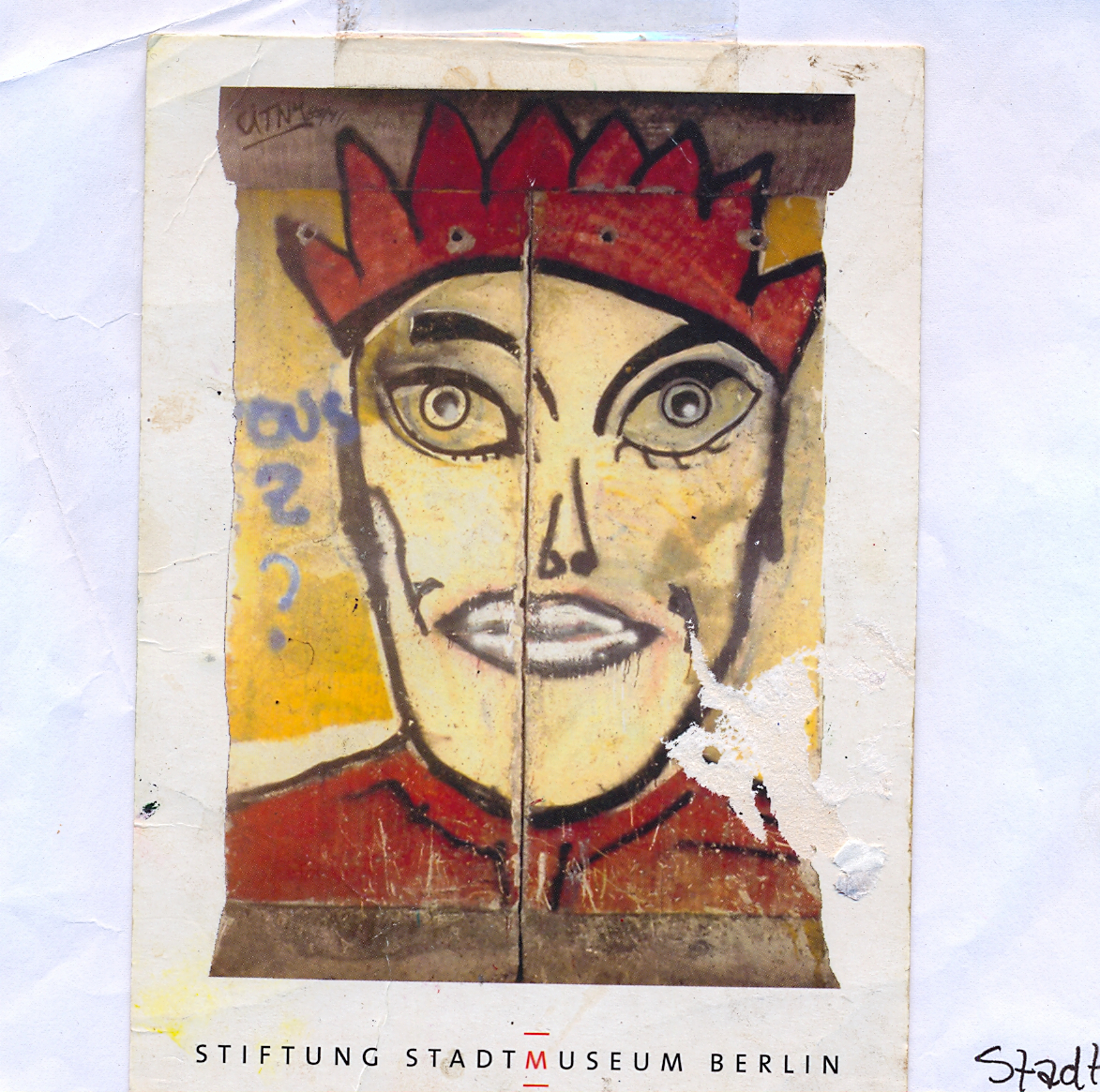The Original West-Berlin Wall (before 1989)
Kiddy Citny began to paint the Berlin Wall with two of his friends, Theirry Noir and Christophe Bouchet, in 1985.
The remaining pieces of the Berlin wall on Potsdamer Platz in Berlin-Mitte is a constant reminder of a time when the capital was divided into two cities: East Berlin and West Berlin. Nowadays, it is rare to see old pieces of the wall in their original, cold and strict colour: Gray.
Most of the still standing parts are now colourfully painted. It was not always like that: Decades ago, in the 1980s, when the wall was meandering through Berlin’s cityscape like a grey, sad and heavy mooded monster snake. Citny and his friends could not stand the transmitted heavy weight and tristesse of those concrete witnesses of division and exclusion. They decided – against all odds, fully aware that painting it was highly illegal – to paint that monster nevertheless and make it their outdoor atelier: Thus, Kiddy Citny became an icon of Berlin’s street art scene.
Now, 30 years after the fall of the Berlin wall in 1989, Citny is famous not only in Berlin and Germany, but worldwide for his art and and courage behind it.
The wall in the eighties was the most concrete manifestation of the so called ‘cold-war’ East-West war games. The illegal act of painting the wall was done in an attempt to enclose East Berlin in art.
Citny's 3.6 meter-high faces found their way around the world in the form of tourist photographs and postcards.
Since the fall of the wall and the end of the cold war, Citny's art has traveled all over the world, in private collections, in Paris and New York, in front of the U.N. Headquarters.
Citny sits on a piece of the Berlin Wall that he painted, which now sits in the Märkisches Museum in Berlin.
ZDF report on the 30th anniversary of the fall of the Berlin Wall

